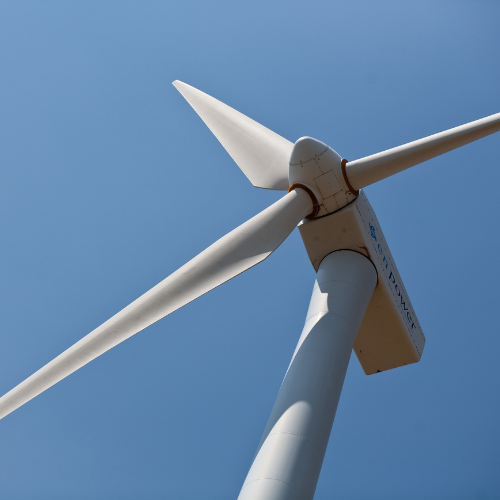Occupational health and safety
(GRI 403-1, GRI 403-2, GRI 403-3, GRI 403-5, GRI 403-7, GRI 403-8, GRI 403-9)

As an energy company whose portfolio comprises large-scale infrastructures, Alpiq has a particularly high exposure in health and safety and therefore bears a great responsibility towards its own employees and towards people and nature generally, for example by ensuring radiation protection at nuclear power plants.
Alpiq constantly strives to take all necessary measures to protect the health and safety of its employees and of third-party personnel. Health and safety is one of our strategic sustainability KPIs and top management is informed on a regular basis about accidents, near misses and other relevant topics. It is our declared commitment to adequately manage all risks not only because it is our legal obligation but also because it is our moral duty.
At all power plants, site- and technology-specific risk assessments set the basis for the control measures and prevention plans and are revised on a regular basis. Occupational health services, such as health monitoring, are provided by occupational physicians whenever required. In addition, line managers should ensure that the general physical condition of employees is monitored and considered suitable for them to perform their respective task on the power plants.
Alpiq aims to ensure that each employee receives adequate health and safety briefings, instructions, and training with periodical refreshers. Furthermore, local management makes sure that workers from service providers receive appropriate instructions regarding health and safety risks during their activities and check the validity of training certificates. Alpiqʼs contractors and service providers are carefully selected. Most of the long-term service providers have certified health and safety management systems. Whenever this requirement cannot be fulfilled, the activities are subject to special monitoring.
In line with national and local regulations, every power plant has a contingency plan. These plans are adapted to the specific characteristics of each facility and shared with the local authorities and fire brigades. Physical access to the power plants operated by Alpiq is protected and monitored.
Our new Health and Safety vison and mission and our Group Health & Safety Policy set out the key principles that will guide our work in the coming years.
Milestones
- Commitment to health and safety embedded in new Code of Conduct released in 2023
- Publication of Alpiqʼs Health and Safety & Wellbeing vision and mission and roadmap prepared for its implementation
- Alpiq Energía España (covering both Madrid office and Plana del Vent) certified to ISO 45001
- First joint health and safety workshop for Division International and Division Switzerland held in San Severo in May 2023
- The Milan office and the power plant in San Severo adhered to the Workplace Health Promotion Programme (WHP)
Numbers
- 9,000 – days without lost time injuries at Csepel CCGT plant
- 0 – number of lost-time injuries during construction of Tormoseröd wind farm by Siemens Gamesa Renewable Energy
- 0 – fatalities as a result of work-related injury and/or work-related ill health of both own employees and all workers who are not employees but whose work and/or workplace is controlled by Alpiq
- 0 – high-consequence work-related injuries of both employees and all workers who are not employees but whose work and/or workplace is controlled by Alpiq
- 1 – recordable work-related injury (mechanical) of own employees
- 0.4 – Total Recordable Injury Frequency Rate (TRIFR) of own employees (based on 1,000,000 hours worked)
- 3 – recordable work-related injuries of workers who are not employees but whose work and/or workplace is controlled by Alpiq (1 slip and 2 mechanical injuries)
- 83 – % of employees who perform office tasks with a low health and safety risk profile
- 87 – % of employees working on asset operations of power plants covered by ISO 45001
Statement
“We donʼt have to wait for an incident to learn. I am convinced that a new, proactive approach to health and safety can support Alpiqʼs journey towards safety excellence, slowly shifting from compliance to commitment, from imposing to involving, and from controlling to caring.”
Raffaella Amiconi
Senior Expert in Health and Safety
Frameworks/Standards
ISO 45001, Swiss Federal Nuclear Safety Inspectorate (ENSI), Swiss National Accident Insurance Fund (SUVA)
Success stories
Increasing health and safety awareness among contractors
In November, Alpiq held the fifth annual “Small Hydro Workshop” to raise awareness of health and safety topics among managers and third-party operational staff from smallscale hydro power plants owned by Alpiq in Switzerland and participants operating Alpiqʼs larger hydro plants. Participants discussed health and safety challenges, experienced flood-fighting activities at the Gösgen hydropower plant, and toured Hydrospiderʼs H2 production facility.

Tormoseröd installation phase completed without major accidents
At Tormoseröd, Alpiqʼs co-owned 72.6 MW wind farm in Sweden, all 11 wind turbines are in operation now. This project not only involves high technological demands but also health and safety issues that need to be considered to ensure the successful construction and commissioning of the wind farm. Discover more here about this challenging task in an interview with Raffaella Amiconi, Senior Expert in Health and Safety at Alpiq.
